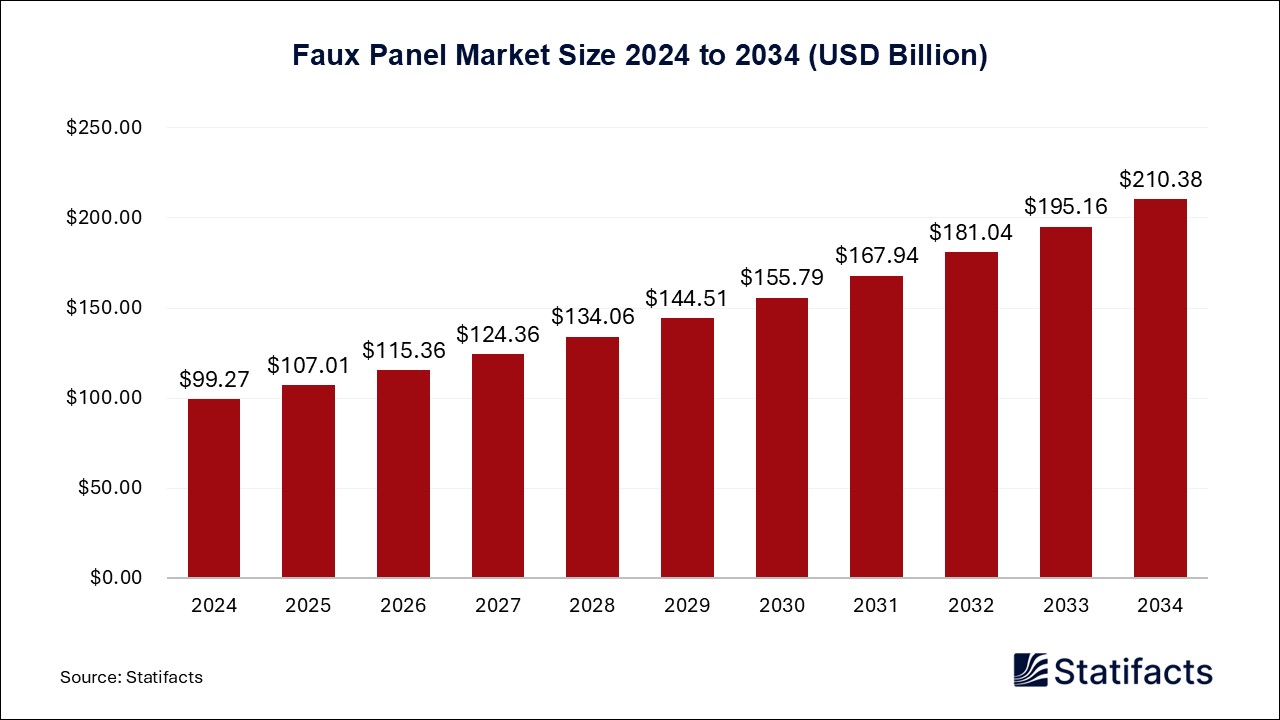The global phenolic resin market size was valued at USD 12.57 billion in 2024, is projected to reach approximately USD 16.41 billion by 2034. This growth, driven by increasing use in coatings, adhesives, and molding compounds, is expected at a CAGR of 2.7%.
Phenolic Resin Market Statical Scope
| Reports Attributes |
Statistics |
| Market Size in 2024 |
USD 12.57 Billion |
| Market Size in 2025 |
USD 12.91 Billion |
| Market Size in 2031 |
USD 15.15 Billion |
| Market Size by 2034 |
USD 16.41 Billion |
| CAGR 2025 to 2034 |
2.7% |
| Base Year |
2024 |
| Forecast Period |
2025 to 2034 |
What Is Driving Growth in the Phenolic Resin Market?
The phenolic resin market is gaining momentum, largely driven by increasing demand in automotive manufacturing, where these resins are used in brake pads, clutch facings, filters, and other components. Phenolic resin is a synthetic thermosetting polymer created by reacting phenol and formaldehyde. Its popularity stems from its exceptional mechanical strength, flame retardancy, and high resistance to heat and chemicals. According to data from the Society of Indian Automobile Manufacturers (SIAM), the Indian automotive industry produced 3.10 crore vehicles in FY 2024–25, up from 2.84 crore vehicles in FY 2023–24, including passenger vehicles, two- and three-wheelers, quadricycles, and commercial vehicles. The growing automotive output highlights the expanding role of phenolic resins in enhancing safety and durability in vehicle components.
What Challenges Are Limiting the Growth of the Phenolic Resin Market?
Despite its strong growth prospects, the phenolic resin market faces production challenges due to the precise processing conditions required to form high-quality components. Extensive curing processes add to operational costs and result in longer production times, which can limit application in high-volume manufacturing. Environmental regulations are another concern, as phenolic resins can release volatile organic compounds (VOCs) and emissions during production, prompting stricter control measures. These challenges necessitate further innovation in processing techniques and materials to balance performance with sustainability.
How Is Construction and Infrastructure Development Supporting Market Expansion?
The rapid boom in construction and infrastructure across developing economies such as China, India, and Vietnam is also expected to create significant demand for phenolic composites and adhesives. These resins are widely used in roofing, flooring, wall panels, and other structural applications due to their superior strength and chemical stability. China, in particular, remains one of the leading countries in phenolic resin production, supported by rapid industrialization and large-scale infrastructure projects. The country’s continued investment in modern construction and industrial facilities positions it as a key driver in the global market.
What Role Does Sustainability Play in the Future of Phenolic Resins?
The future of phenolic polymers lies in sustainable innovation. Manufacturers are increasingly focused on developing bio-based phenolic resins using renewable raw materials such as cardanol and lignin. These efforts aim to reduce VOC emissions and address environmental compliance challenges, allowing producers to meet global sustainability standards. Bio-based formulations not only lower environmental impact but also enhance the competitiveness of phenolic resins in eco-conscious industries. Additionally, the growing use of phenolic resins in aerospace and defense applications presents new revenue opportunities for manufacturers due to their thermal stability and lightweight properties.
How Are AI and ML Transforming the Phenolic Resin Industry?
Artificial Intelligence (AI) and Machine Learning (ML) are playing a crucial role in improving the efficiency and precision of phenolic resin production. These technologies assist in resin formulation by simulating molecular structures and optimizing material performance for specific applications. Sensors integrated into production lines monitor cross-linking rates, reducing defects and ensuring consistent quality throughout the manufacturing process. AI-driven energy management systems are also being adopted to optimize power usage, reducing fuel consumption and minimizing carbon footprints. Through these innovations, technology is enabling the phenolic resin industry to enhance productivity, improve material quality, and achieve greater sustainability.
Phenolic Resin Market Share, By Region, 2024 (%)
| Regions |
Shares (%) |
| North America |
28% |
| Asia Pacific |
42% |
| Europe |
22% |
| LAMEA |
8% |
- Asia Pacific – Holds 42% of the market, driven by rapid industrialization, construction growth, and strong manufacturing activity. Dominates due to high demand for FRP and coating applications across China, Japan, and India.
- North America – Accounts for 28% of the market, supported by established automotive, marine, and infrastructure sectors. Gaining momentum through increased adoption of advanced resin systems for high-performance applications.
- Europe – Represents 22% of the market, with strong demand from automotive, energy, and construction industries. Gaining momentum due to environmental regulations promoting durable and long-lasting materials.
- LAMEA – Holds 8% of the market, showing emerging demand in Latin America, the Middle East, and Africa. Not dominating due to smaller-scale industrial production but showing steady growth with expanding infrastructure projects.
Phenolic Resin Market Share, By Type, 2024 (%)
| Segments |
Shares (%) |
| Standard Bisphenol A Epoxy Vinyl Ester |
28% |
| Flame Retardant Epoxy Vinyl Ester |
14% |
| Phenolic Epoxy Vinyl Ester |
18% |
| High Crosslinking Density Epoxy Vinyl Ester |
10% |
| Flexible Epoxy Vinyl Ester |
10% |
| PU Modified Epoxy Vinyl Ester |
12% |
| Others |
8% |
- Standard Bisphenol A Epoxy Vinyl Ester – Holds a 28% share of the market, widely used for its excellent mechanical strength and corrosion resistance. Dominates due to its broad applicability across FRP products, coatings, and industrial composites.
- Phenolic Epoxy Vinyl Ester – Represents 18% of the market, offering superior heat and chemical resistance. Gaining momentum as industries increasingly adopt high-performance resins for demanding environments.
- Flame Retardant Epoxy Vinyl Ester – Accounts for 14% of the market, formulated to resist ignition and fire spread. Gaining traction due to stringent fire safety standards in construction, marine, and transportation sectors.
- PU Modified Epoxy Vinyl Ester – Holds 12% of the market, known for enhanced toughness and flexibility. Gaining momentum as industries seek improved impact resistance and durability in resin applications.
- High Crosslinking Density Epoxy Vinyl Ester – Represents 10% of the market, valued for its high mechanical strength and thermal stability. Not dominating but used in specialized applications requiring superior structural integrity.
- Flexible Epoxy Vinyl Ester – Accounts for 10% of the market, providing elasticity and crack resistance. Gaining momentum in applications where vibration resistance and flexibility are key performance factors.
- Others – Comprise 8% of the market, including specialty resin formulations. Not dominating due to niche usage but expanding as customized solutions gain demand.
Phenolic Resin Market Share, By Application, 2024 (%)
| Segments |
Shares (%) |
| FRP Products |
36% |
| Anticorrosive Coatings |
22% |
| Concrete Lining |
18% |
| Binder |
14% |
| Others |
10% |
- FRP Products – Represent 36% of the market, serving as the primary application for phenolic resins in reinforced plastics. Dominates due to extensive use in construction, automotive, and marine composites for their strength and durability.
- Anticorrosive Coatings – Hold 22% of the market, used for protecting industrial equipment and structures. Gaining momentum as industries prioritize corrosion resistance in harsh operating environments.
- Concrete Lining – Accounts for 18% of the market, enhancing the strength and longevity of concrete structures. Gaining traction with rising infrastructure investments and demand for chemical-resistant materials.
- Binder – Represents 14% of the market, used in composites and laminates for adhesion and reinforcement. Not dominating but steadily growing as composite manufacturing expands.
- Others – Comprise 10% of the market, covering specialized and custom resin applications. Not dominating but expanding with increased product diversification.







